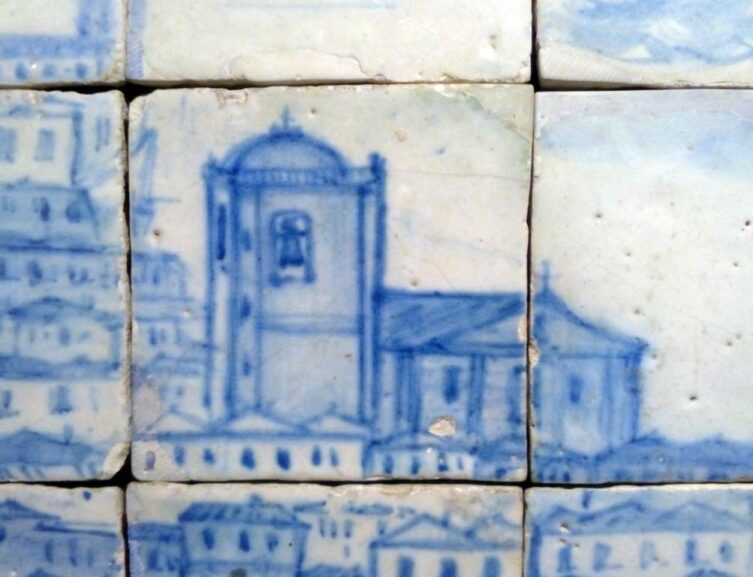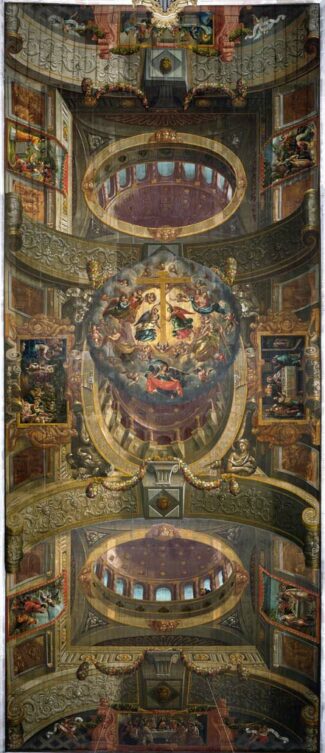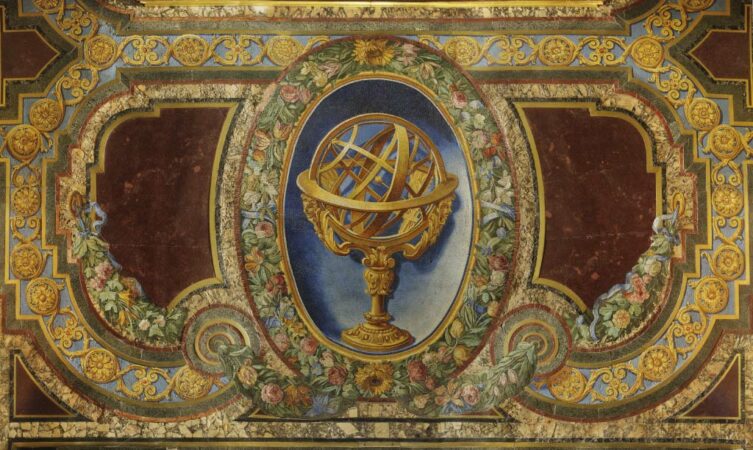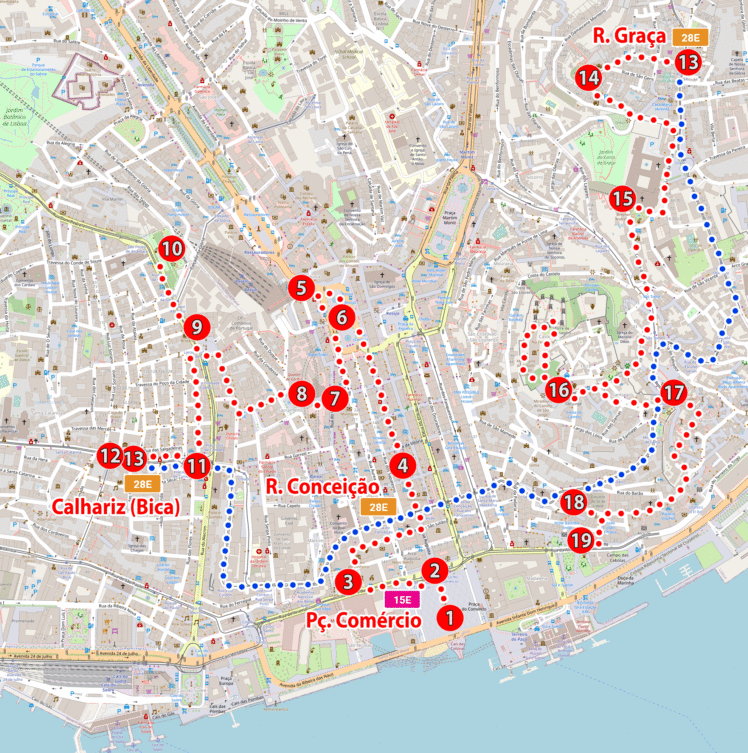St. Rocha (Igreja de Sao Roque) in Lisbon - sightseeing, curiosities, tickets, map

photo: RickMorais, source: Wikipedia on the basis CC BY-SA 4.0
Ugly duckling?
Approaching the façade of St. Roch, you may feel a little disappointed and wonder why I insisted on coming here.
Some quite elegantly say that the exterior of the church building has "austere form". However, let's not be afraid to say directly that from the outside, it is simply uninteresting, boring and unremarkable, and therefore often overlooked. There is absolutely no indication of what is inside. Well, once again the saying is true: don't judge a book by its cover.
The infected cemetery
The Church was created by Jesuitsbrought to Portugal by the king Portuguese John III. The real estates made available to them for living quickly became insufficient for the monks and they undertook intensive efforts to build their own seat and church. The Jesuits especially liked one hill. The hill, which was a great cemetery during the plague that ravaged Lisbon in 1505, and victims of the plague were brought there. It was then (in 1506) that the inhabitants of the city decided to build a sanctuary on the hill, and the church authorities decided to place in it the relics of St. Roch, patron saint of plague victims.
Long negotiations brought the Jesuits success. The king succumbed to their persuasion and handed over the sanctuary to St. Roch to the Order of the Society of Jesus.
Building
The Jesuits almost immediately proceeded with the implementation of the rest of the plan, which involved demolishing the existing sanctuary and building a church that would fulfill their ambitions.
The contract signed between the king and the order obliged the Jesuits to keep St. Roch as the patron of the new church, and at least one chapel has been dedicated to it.
Work began quickly, and thus the first Jesuit church in Portugal and one of the first in the world was built. It became the headquarters of the Jesuits in the state and held this role for over 200 years, until the Jesuits were expelled from Portugal and the order was finally dissolved by Pope Clement XIV.
Let's go inside
Returning to the church itself, it must be said that the monks did not spare neither energy nor resources to make the interior of the temple simply enchanting. The interior layout itself has been designed so that the church could serve as an ideal auditorium for preaching. This style of construction has even gained the name of "Jesuit style" and has become a model for other churches.
Below panoramic photo of the interior of St. Roch (you can rotate and zoom them):
There is a three-dimensional painting on the flat ceiling of the church, based on an optical illusion and illusion, known in architecture as "trompe-l'œil" or "cheating the eye". While standing in the right place (near the center of the church), look up. You will fool your eyesight and see the three-dimensional illusion of a barrel vault, supported by four large, richly decorated arches and the interior of three huge domes with windows (even a man leans from the balcony on one of them).
Unfortunately, under the central dome, the Jesuits painted a large medallion depicting the "Glorification of the Cross", which in my opinion slightly spoils the three-dimensional effect.
A photograph of the ceiling in the church of St. Roch in Lisbon, I present below. You can also download the image available from Wikipedia at very high quality - [click] to look at some interesting details.

source: Wikipedia as a public domain
Curiosity:
You can also see brilliant paintings based on illusion and fooling the eye in Poland. They are located in the amazing Cistercian abbey in Lubiąż. You can see more information and photos from the abbey in the post: Lubiąż Monastery - a gigantic Cistercian abbey, a barrel of tar and three tablespoons of honey
The most expensive chapel in Europe
There are eight chapels inside the church. They are all beautiful, but one of them is unique in the world. This St. John the Baptist (Capela de São João Baptista). The Jesuits commissioned it to artists from Italy. The most expensive materials available in the world at that time were used: ivory, gold, silver, porphyry, agate, lapis lazuli, and hundreds (!!!) artists and craftsmen worked on the implementation.
The chapel was entirely constructed and installed in the Church of Sant'Antonio dei Portoghesi in Rome. After being blessed by the Pope, it was disassembled, packed into three ships, transported to Lisbon and reassembled.
When it was built, it was the most expensive chapel in Europe. Its construction was financed mainly with gold and the wealth that flowed to Portugal from Brazil.
When looking at the chapel, notice the paintings on the side panels, center panel, and floor. While on the floor an attentive observer can see this, it is really hard to see in the other paintings that they are not really paintings! They are extremely intricate mosaics. They are made of tiny, colorful crumbs, roughly two to five millimeters in size. Taking into account the nuances of color, perspective and a certain "softness" of the painting itself, it is easy to realize the scale of mastery of these works.
Below is a photo of the mosaic on the floor of the Chapel of St. John the Baptist. High definition mosaic image you can download from Wikipedia - [click]. You can see that it is really a mosaic 🙂

source: Wikipedia as a public domain
Useful information
ATTENTION !
If you have a city card Lisboa Card - [click] then you are entitled to a 40% discount on admission to the Museum of St. Roch.
St. Roch, GPS coordinates:
38°42’48.2″N 9°08’36.4″W
38.713387, -9.143444 - click and route

number 9 is the church of St. Roch
Lisbon sightseeing itinerary
This post is part of a very detailed Lisbon sightseeing itinerary that I have developed. The plan is available for free and you can see it on the website: Lisbon sightseeing plan - map, attractions, monuments, tickets, accommodation, interesting factsAccommodation in Lisbon
To facilitate the search for accommodation, I will present here some interesting (in my opinion) proposals from the historic center of Lisbon. Don't consider them "just the best". They are an interesting proposition and can be a good choice or a good starting point for further research. Clicking on any of these hotels will take you to the offer details and (perhaps even more importantly) will display a list of similar offers. Thanks to this, you will immediately gain access to a list of interesting accommodation, which you can then filter and view according to your preferences.
Solar dos Poetas - [click]
Bairro Alto Suites - [click]
Casa das Janelas com Vista - [click]
Portugal sightseeing plan
This entry is part of a complete one Portugal sightseeing plan - [click]. The guide contains plans, maps and descriptions of specific sightseeing routes.To see all currently available descriptions of attractions in Portugal, click on the link: Continental Portugal - [click].
Safe car rental guide: Portugal - car rental without credit card, no deposit
Important to me!
Give the article a good rating (5 stars welcome 😀)!It's free, a for me it is very important! The blog lives on visits and thus has a chance to develop. Please do it and ... thank you in advance!
If you like my guides, you will certainly find the one I created useful guide catalog - [click]. There you will find ready-made ideas for your next trips, descriptions of other tourist destinations and an alphabetical list of guides divided into countries, cities, islands and geographical regions.
I also post link to Facebook profile - [click]. Come in and press "Follow"then you will not miss new, inspiring posts.
Unless you prefer Instagram. I'm not a social media demon, but you can always count on something nice to look at on my instagram profile - [click]. The profile will gladly accept any follower who likes it.
I make the content I create available free of charge with copyright, and the blog survives from advertising and affiliate cooperation. So, automatic ads will be displayed in the content of the articles, and some links are affiliate links. This has no effect on the final price of the service or product, but I may earn a commission for displaying ads or following certain links. I only recommend services and products that I find good and helpful. Since the beginning of the blog's existence, I have not published any sponsored article.
Some of the readers who found the information here very helpful, sometimes ask me how you can support the blog? I do not run fundraisers or support programs (type: patronite, zrzutka or "buy coffee"). The best way is to use links. It costs you nothing, and support for the blog is self-generating.
Pozdrawiam



